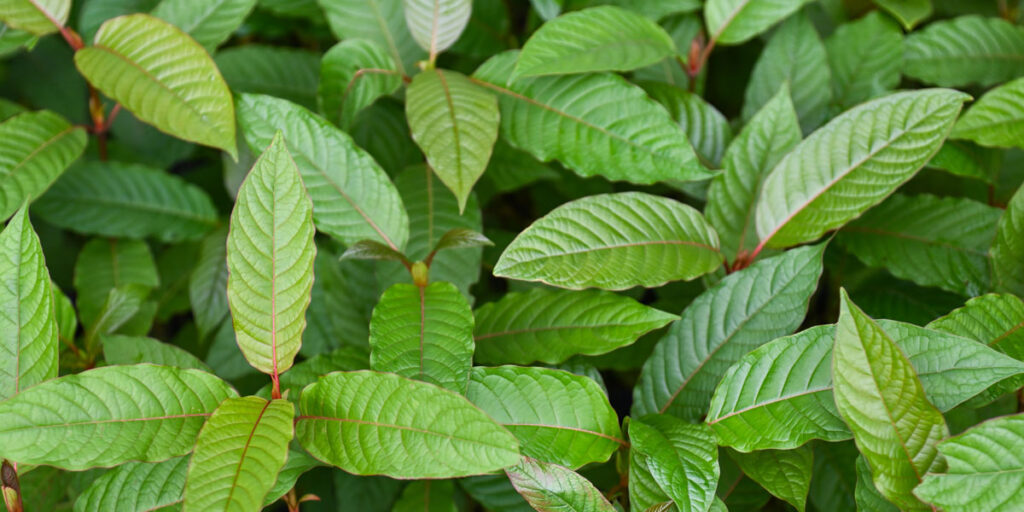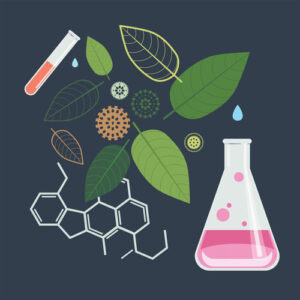
On July 29, 2025, Dr. Paula Brown, Director of BCIT’s Natural Health and Food Products Research Group (NRG), joined U.S. health officials in Washington, DC to announce new rules to protect US citizens from dangerous synthetic drugs misbranded as kratom.
What is kratom?

Kratom, a deciduous tree in the coffee family that grows in Southeast Asia, has been consumed for centuries as a restorative for its energizing and analgesic properties. More recently kratom has gained popularity in North America, with an estimated 16 million American’s consuming kratom to improve their quality of life. The leaves of kratom are chewed or consumed as a tea and contain a wide variety of phytochemicals, including flavonoids, terpenes, polyphenols and alkaloids. Mitragynine, the most abundant natural alkaloid found in kratom leaves, acts on multiple systems in the body to provide a mild energy boost and to alleviate stress and minor pain.
Mitragynine is metabolized in the human body to some degree into the active metabolite 7-hydroxymitragynine (7-OH). Although the transformation of mitragynine to 7-OH has been observed in post-harvest kratom, it occurs at trace levels that are physiologically irrelevant. Unfortunately, some companies are creating synthetic (lab-made) 7‑OH and selling it in the U.S. as “natural” kratom extracts. These so-called “7-OH” products are not kratom, are not natural and contain substantially high levels of 7-OH, even up to 98% .
The problem with 7-OH

“The pharmacology of 7-OH differs drastically from mitragynine and the other natural kratom alkaloids” explains Dr. Michael Chan of the BCIT Natural Health and Food Products Research Group. “Unlike mitragynine, which acts on multiple neurotransmitter systems in the human body, 7-OH mainly acts on the µ-opioid receptors, exerting effects similar to conventional opiates like morphine and fentanyl.”
Studies have shown 7-OH has a binding affinity that is 13-22X greater than morphine at the µ-opioid receptor and can induce respiratory depression comparable to morphine that is reversed by naloxone. In comparison, the natural kratom alkaloid mitragynine, was shown to increase respiratory frequency and is unaffected by naloxone.

“These findings highlight the critical differences between natural kratom alkaloids and synthetic 7-hydroxymitragynine and further emphasizes the risks associated with these unapproved drug products. My primary concern is that people who believe they are buying kratom may actually be using something as risky as morphine or fentanyl.” stated Dr. Brown.
Along with colleagues in the U.S., Drs. Brown and Chan have been warning about the emergence of synthetic 7-OH being sold as kratom. Dr. Brown is part of the Scientific Association for Botanical Education and Research (SABER), a scientific organization in North America that works to keep botanical (plant-based) products safe. She has been a leading voice in showing that synthetic 7‑OH is not the same as kratom and can cause serious health risks like addiction, overdose, and poisoning.
The U.S. response
At the July 2025 press briefing, U.S. health agencies including the FDA, DEA, and HHS announced a new plan to clearly separate natural kratom from synthetic 7‑OH. The FDA recommended classifying 7‑OH as a Schedule I controlled substance (the strictest category, shared by heroin and LSD) because of its high risk of abuse.
Dr. Brown summed it up. “The FDA’s decision to schedule 7-OH is a long-overdue recognition of the science: this compound is not found at pharmacologically relevant levels in the kratom plant and should never be confused with natural kratom. We urgently need regulators and consumers alike to distinguish between the two, because public health depends on it.”
Importantly, U.S. officials stressed they are not banning the natural kratom plant, only synthetic 7-hydroxymitragynine.
Kratom in Canada
In Canada, Kratom is classified as a natural health product (NHP) under Schedule 1, item 2 (leaf material) of the Natural Health Product Regulations. Health Canada has yet to license a kratom product in Canada, which would need to comply with Canada’s Natural Health Products Regulations. At the same time, it allows Canadians to import foreign kratom products for personal use, and concerningly, these products do not necessary comply with Canadian quality standards, putting the health and safety of Canadians at risk.
At BCIT, Dr. Brown and her team are working to establish quality standards to differentiate authentic natural kratom products from dangerous synthetic products masquerading as kratom.
“We are immensely proud of the groundbreaking work led by Dr. Brown and Dr. Chan. For many years, NRG has advanced the safe and effective use of natural health products here in Canada, and abroad. It is inspiring to see their expertise shaping international efforts to safeguard public health. Their efforts underscore BCIT’s commitment to world-class applied research that delivers real impact for all” says Jonathan Bassan, Interim Dean Applied Research and Innovation.
About NRG
BCIT Natural Health and Food Products Research Group (NRG) addresses issues of product quality, process improvement, and human health using basic and applied science along with state-of-the-art technology. The goal of NRG is to ensure that all Canadians can achieve the potential health and economic benefits offered by medicinal plants, natural health products and the food industry.